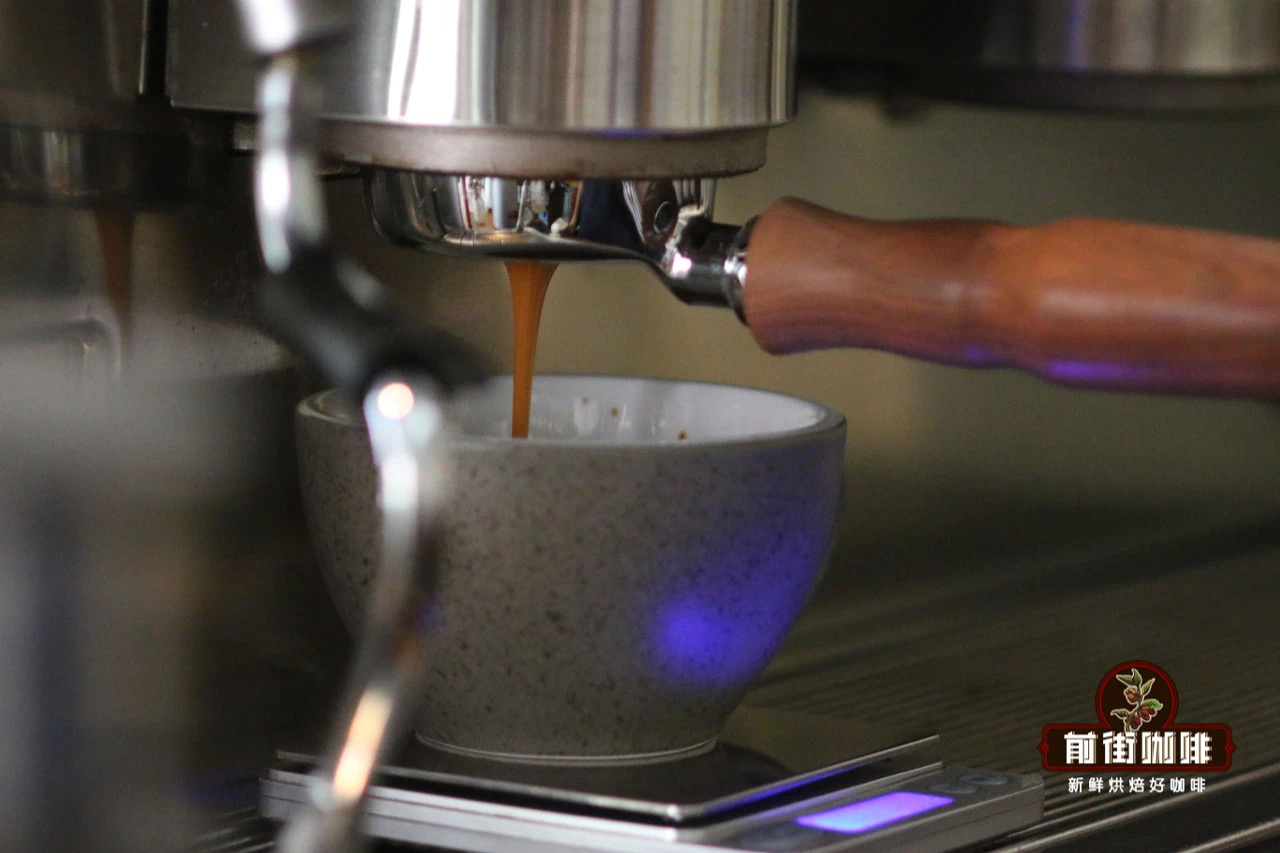How about Tanzanian coffee? Tanzanian Coffee Hand Brewed Advice Tanzanian Coffee Flavors

Professional coffee knowledge exchange more coffee bean information please follow the coffee workshop (Wechat official account cafe_style)
When it comes to coffee in Africa, I always think of Ethiopia and Kenya. I wonder if you have ever heard of Tanzanian coffee. Or Kilimanjaro coffee? Today, Qianjie Coffee will take a look at Tanzania with you! See how unique the coffee here will be!
Tanzanian coffee
Tanzania is close to Ethiopia and adjacent to Kenya, so some of the population of Tanzania has a long historical and cultural origin with coffee, but the commercial cultivation of coffee in Tanzania did not begin until the beginning of the 20th century. German colonists asked local farmers to grow Arabica coffee in the form of cash crops, to promote the plant in Tanzania, and to develop industry near Mount Kilimanjaro.

After World War I, Germany handed over control of the colony to Britain, while Britain tried to develop a more efficient and profitable coffee industry along the Kenyan route. Small farmers' cooperatives were organized in the 1920s in an attempt to improve market access, but coffee in Tanzania has been really popular internationally for many years.
In 1964, after the independence of the two countries from Britain, Tanganyika and Zanzibar merged to form the United Republic of Tanzania, hence the name Tanzania. Growers tried to increase greatly in the 1970s, but it was difficult to increase production. In the 1990s efforts were made to reform and privatize coffee exports to enable growers to sell coffee more directly. Today, in most of the western world, Tanzanian coffee is mainly known for its separate batches of round beans.
Kilimanjaro coffee growing area
Although not as famous as Kenyan beans, its annual output is almost equal to that of Kenya, with an annual output of 50, 000 tons. The earliest Arabica seeds were introduced from the French island of Reunion and planted in Bayamoyo and Mogoro. Beans planted on the slopes of Kilimanjaro became the most successful coffee beans in 1893, and other varieties were introduced from neighboring Burundi in western Tanzania in the 1950s. At present, the main species account for 75% in high-altitude areas, but local wild coffee still appears one after another.

Kilimanjaro is the largest coffee producing area in Tanzania, and Kilimanjaro coffee is also an important lifeline of the Tanzanian economy. Kilimanjaro coffee comes from Mount Kilimanjaro, the highest mountain in Africa in northeastern Tanzania. Local coffee farmers grow between 1300 and 2000m above sea level, are bred by volcanic ash, and grow at high elevations, producing coffee beans of high quality.
Qianjie Coffee is deeply interested in Tanzanian Kilimanjaro Coffee and chooses Kilimanjaro Coffee with native flavor among many Tanzanian coffee. This coffee comes from the Kilimanjaro coffee growing area in the north.
Front Street Coffee Tanzania Kilimanjaro Coffee
Producing area: Kilimanjaro volcano area in the northern highland
Altitude: 1300-2000m
Variety: bourbon
Treatment: washing
Grade: AA

Coffee variety
Bourbon is also a natural variety native to Yemen. Its name comes from the island of Bourbon, where it was originally planted, which is now Reunion. Bourbon coffee fruit is short and round, with high density of pulp and seeds. Bourbon coffee usually has a high sweetness, bright acidity and a wine-like flavor. The output of bourbon coffee is 20-30% higher than that of iron pickup, but it is still regarded as a low-yield bean seed and is also vulnerable to rust leaf disease.
Washing treatment
Tanzanian coffee is mostly washed. After picking, coffee farmers will send the coffee fruit to the nearest processing plant for processing.

The steps of washing treatment are as follows:
1. Select and remove the impurities in the coffee fruit.
2. Remove the pulp and exocarp of coffee
3. Put it into the fermentation tank and remove the pectin layer from the inner pericarp by fermentation.
4. clean it and then dry it.
Thoughts on coffee baking in Qianjie
Kilimanjaro coffee is a uniform size of large coffee beans, the color is gray-green, compared with a strong sour and sweet flavor, excellent flavor. The front street uses medium and shallow roasting to emphasize the sweetness and light acidity of this coffee.


Test the flavor of Qianjie coffee cup
The dry aroma of ground powder is like honey, vanilla and the sweetness of baked cookies. The wet aroma has a more obvious sweetness of BlackBerry syrup and a mixture of spices. The cup test shows dark fruit, berries, very sweet, and the sweetness of vanilla will appear in the aftertaste.

Suggestion on brewing coffee in Qianjie
Filter cup: V60 filter cup
Water temperature: 90 ℃
Amount of powder: 15g
Powder / water ratio: 1:15
Degree of grinding: medium and fine grinding (pass rate of No. 20 standard screen 78%)
Segmented extraction
Steam with 30 grams of water for 30 seconds, small water flow around the circle to 125 grams for sectional injection, water level drop is about to expose the powder bed, continue to inject water to 225 grams to stop injection, and so on when the water level drop is about to expose the powder bed, remove the filter cup, (steaming starts timing) the extraction time is 2 minutes 39 percent 00 ".
For more boutique coffee beans, please add private Qianjie coffee on Wechat. WeChat account: kaixinguoguo0925
Important Notice :
前街咖啡 FrontStreet Coffee has moved to new addredd:
FrontStreet Coffee Address: 315,Donghua East Road,GuangZhou
Tel:020 38364473
- Prev

Is the coffee bitter in Tanzania? How do you drink Tanzanian coffee? Coffee producing area of Tanzania
Professional Coffee knowledge Exchange more coffee bean information Please follow Coffee Workshop (Wechat official account cafe_style) Coffee Workshop (official account Wechat) Mount Kilimanjaro (Mt Kilimanjaro), the highest peak in northeast Africa in Tanzania was first introduced bourbon line coffee in 1893, raw bean treatment is mainly water washing, good quality high-altitude coffee, just as Kenya has active and bright acidity.
- Next

What are Italian coffee beans? What is the difference between the flavor characteristics of blended coffee beans and individual coffee beans?
Professional coffee knowledge exchange more coffee bean information please follow the coffee workshop (Wechat official account cafe_style) what is Italian coffee beans? What's the difference between coffee beans and individual coffee beans? What is the purpose of Italian comprehensive matching? Mixed coffee beans are also called formula coffee beans, mixed coffee beans, blended coffee beans (mainland), and blend coffee in English.
Related
- Detailed explanation of Jadeite planting Land in Panamanian Jadeite Manor introduction to the grading system of Jadeite competitive bidding, Red bid, Green bid and Rose Summer
- Story of Coffee planting in Brenka region of Costa Rica Stonehenge Manor anaerobic heavy honey treatment of flavor mouth
- What's on the barrel of Blue Mountain Coffee beans?
- Can American coffee also pull flowers? How to use hot American style to pull out a good-looking pattern?
- Can you make a cold extract with coffee beans? What is the right proportion for cold-extracted coffee formula?
- Indonesian PWN Gold Mandrine Coffee Origin Features Flavor How to Chong? Mandolin coffee is American.
- A brief introduction to the flavor characteristics of Brazilian yellow bourbon coffee beans
- What is the effect of different water quality on the flavor of cold-extracted coffee? What kind of water is best for brewing coffee?
- Why do you think of Rose Summer whenever you mention Panamanian coffee?
- Introduction to the characteristics of authentic blue mountain coffee bean producing areas? What is the CIB Coffee Authority in Jamaica?

